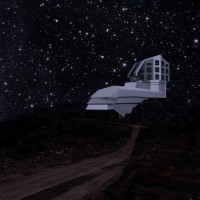Legacy Survey of Space & Time

Penn State is a partner organization in the Legacy Survey of Space and Time (LSST). The LSST will have an 8.4 meter primary mirror and a field of view of 10 square degrees, allowing it to obtain images that are both very wide and very deep. As a result, the LSST will be able to map more than half the sky roughly 1000 times over the course of a decade. This “movie” of the sky will reveal astronomical objects that change or move on rapid timescales: exploding supernovae, gamma-ray bursts, active galaxies, potentially hazardous near-Earth asteroids, and distant Kuiper Belt Objects. The crisp, sensitive images from the LSST also will be used to trace billions of remote galaxies and measure the distortions in their shapes produced by concentrations of dark matter, providing multiple constraints upon the mysterious dark energy. Penn State astronomers plan to use the LSST to study active galaxies, stellar tidal disruptions by supermassive black holes, the most distant galaxies, gamma-ray bursts and fast optical transients, novae in the local supercluster, and brown dwarfs. The torrents of data that will be delivered by the LSST also present an enormous challenge in data mining, and Penn State astrostatisticians are developing relevant algorithms that will help with this challenge. Members of the Center for Exoplanet & Habitable World will explore the planet hunting potential of LSST.
Faculty Contacts
- Eric Feigelson




